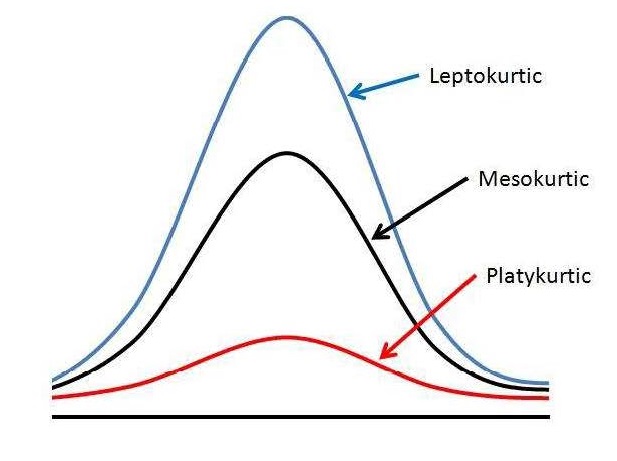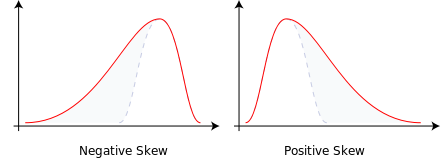Shapes of distribution
Distribution of data can take a wide variety of shapes, and ultimately depends on how data points are distributed along the measurement scale. A general "feel" for the data can be achieved by examining the uniformity (or lack thereof) of a distribution. In general, the larger the sample size, the more symmetrical the distribution.
Uniform distribution
Normal (bell-shaped) distribution
When the collected data tends to hover around a central value, with no bias to the left or the right, the data creates a Normal distribution. This Normal distribution is also referred to as the "Bell Curve" because it resembles a bell like shape.
When stating that data is normally distributed we are identifying that 50% of the values are less than the mean and that 50% of the values are greater than the mean. In a normal distribution the mean, median, and mode are equal to one another.
Examples of data that follow a normal distribution could include blood pressure and scores on a test.
contributed by Scott Trungadi
Skewness
Skewed right Skewed left
Acceptable skewness values: -1.000 < skewness < 1.000
Examining the data skewness allows you to see the variability of a data set. Skewness is when a data set does not follow the normal distribution. A normal distribution has a skewness of zero, and will have perfect symmetry. Data that is positively skewed will be skewed to the right and will be a positive number; data that is negatively skewed is skewed to the left of the data mean, and is a negative number. See an example of skewness, below.
contributed by Cassandra Cosentino
Kurtosis
Kurtosis describes “the clustering of scores toward the center of the distribution” (Meyers, Gamst, & Guarino, 2017, p. 53).
There are three types of kurtosis:
1. Mesokurtic: A normal distribution; has a kurtosis value of 0.
2. Leptokurtic: Positive values of kurtosis; indicate that the bulk of scores are drawn in toward the middle (sharply peaked with heavy tails, for instance).
3. Platykurtic: Negative values of kurtosis; scores are more equally distributed across the entire continuum (a more rectangular distribution). (Meyers, Gamst, & Guarino, 2017, p. 53).
contributed by Britany Kuslis, WCSU Cohort 8
Reference: Meyers, L., Gamst, G., & Guarino, A.J. (2017). Applied multivariate research: Design and interpretation. Thousand Oaks, CA: Sage Publications
Leptokurtic (high, peaky line) Platykurtic (lower, flatter line)
Acceptable kurtosis values : -1.000 < kurtosis < 1.000

contributed by Ashley Brooksbank
